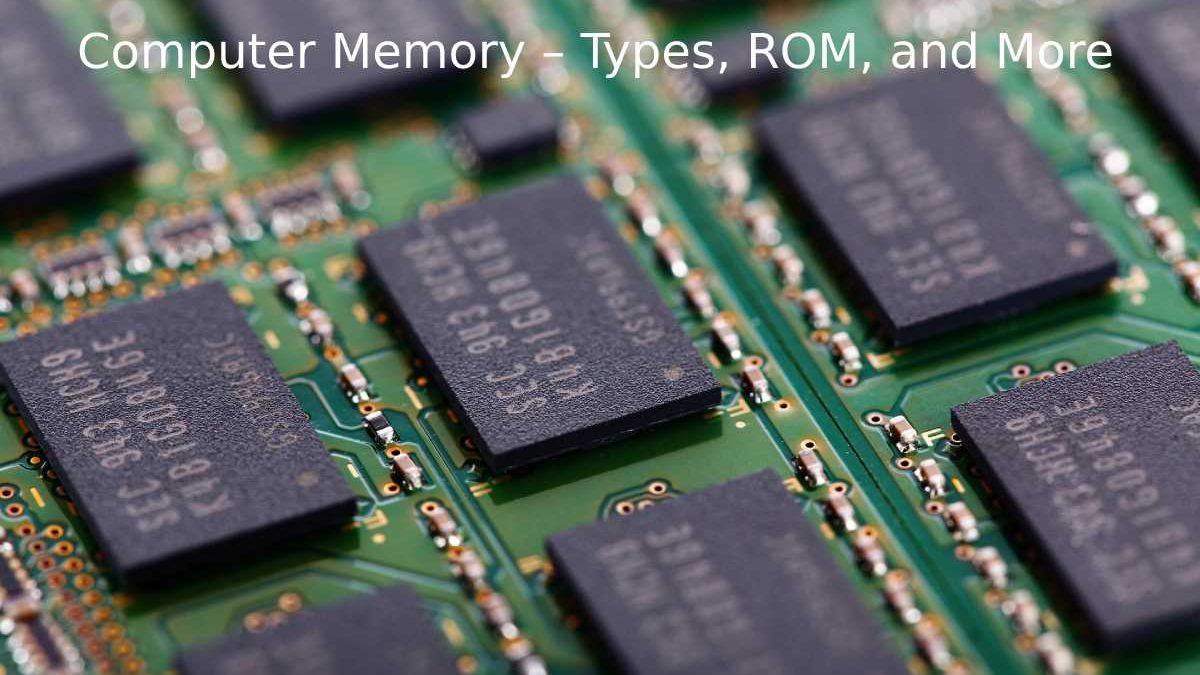Table of Contents
Computer Memory
Computer Memory: Storage refers to the location of data stored for a lengthy period, whereas memory refers to the location of data stored temporarily.
The term “memory” is most frequently used to describe a computer’s primary storage, such as RAM.
Information is also processed in memory. It allows users to access data that is temporarily saved.
What is memory in a computer?
- RAM enables your computer to perform joint operations like launching the software, web browsing, spreadsheet editing, and playing the newest game.
- By remembering where you left off in one task when you switched to another, memory also enables you to switch between various tasks rapidly.
Types of computer memory
Random Access Memory, or RAM, is a semiconductor category utilized in main store memory. It serves as temporary storage, the processor’s short-term working memory, and software instructions. Most computers have expandable memory slots that can be using to add more RAM. image RAM
Random access memory
- Computers use data storage known as random access memory or RAM.
- The term “random” refers to the ability of central or temporary storage, represented by integrated circuits, to provide access to stored data in any order.
- Your computer will run much faster if you carry out the task randomly than sequentially because you won’t waste time getting to the location where the relevant data is kept (such as tape backups).
- Random memory access
ROM
- A read-only memory chip is known as ROM (read-only memory) and cannot be writting to or erasing by a computer user without special tools.
- The ROM content is not lost when the computer’s power is no longer accessible while in operation.
The boot instructions are the only thing storing in the ROM because it doesn’t need power and cannot be changing.
CMOS
- Complementary Metal Oxide Semiconductor is what CMOS stands for. These circuits and chips employ this technology. What
- Even if the content wasn’t storing, you don’t lose it when you shut down. Even when the computer is off, it displays the most recent time and date.
Advantages of computer memory card
- Dependable
- Size physically
- Ability
- Compatibility
- Consistency
- Energy usage
Disadvantages of Computer memory card
- Speed
- Average lifespan
- To update
- Material harm
- File erasure
- Data tampering
- Good manufacture
What technology is among primary and secondary memory?
- A new memory technology known as 3D X-Point has just been creating with properties that fall between primary and secondary memory.
- Secondary memory is less expensive but faster than 3D X-Point, which is more expensive but slower than RAM.
- It belongs to the category of non-volatile memory.
- Due to these characteristics, it can be using in place of RAM in systems that need a lot of system memory but are too expensive to construct using RAM (such as systems that host in-memory databases).
- The disadvantage is that these systems do not fully benefit from RAM usage’s performance advantages.
- Systems using 3D X-Point for system memory can quickly resume function following a power loss or other interruption.
- Because 3D X-Point is non-volatile, preventing the need to re-read all data in memory system memory.
Also Read: Digital Marketing Technologies to Raise your Business – Social Media, and More

